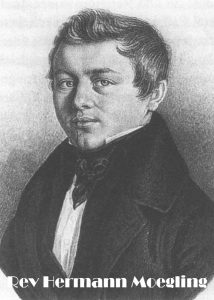Introduction of formal education system in Coorg
Education after annexation of Coorg
When East India Company annexed Kodagu in 1834, there were no schools in the erstwhile kingdom, and none of the locals had any formal education. Lt Col James Fraser, a political agent of the company decided to open vernacular schools in Madikeri, Virajpet and Kushalnagar. Kodagu now has one of the highest literacy rates in Karnataka.
People of Kodagu took to education enthusiastically and encouraged both boys and girls to study. The British, in their policy of ‘enlightened self-interest’, supported education and introduced English along with Kannada. By 1850s, there were a number of educated locals taking up jobs in the government especially in the police, forest and revenue departments, and later in the armed forces.
German Missionaries
 In Kodagu, the credit for furthering education goes to two German missionaries from the Basel Mission. They were Rev Hermann Moegling and Rev Georg Richter. Moegling came to Kodagu in 1853. He first came to Mangalore in 1836 and established a seminary and a school. He not only mastered Kannada but also started the first Kannada newspaper “Mangaluru Samachara” in 1843.
In Kodagu, the credit for furthering education goes to two German missionaries from the Basel Mission. They were Rev Hermann Moegling and Rev Georg Richter. Moegling came to Kodagu in 1853. He first came to Mangalore in 1836 and established a seminary and a school. He not only mastered Kannada but also started the first Kannada newspaper “Mangaluru Samachara” in 1843.
Lt Col Mark Cubbon was the chief commissioner of Kodagu at the time, and he encouraged Moegling to establish the first Protestant church and a school in Madikeri in 1855. Georg Richter arrived at Kannur in 1855 with a group of Basel missionaries. Within days, he was sent to Mangalore where he started teaching in the Basel Mission English School started by Moegling. He was an exceptionally good teacher and was soon popular amongst the locals and the Europeans. Before coming to India, Richter spent time in London to improve his English and learn the latest teaching methods.
 The book by Albrecht Frenz, Georg Richter: His Work in Kodagu on the Basis of Official Reports, provides insights into Richter’s journey to India, his journey from Mangalore to Kodagu and his work in Kodagu. During his time in Kodagu, Richter plunged himself into serious work, teaching as well as helping Moegling in setting up a settlement for Christian converts in Anandapur, where a coffee estate was being developed. In 1858, Richter married Armella, the daughter of Bernhard Schmid, who worked in Tirunelveli and Ooty. When Moegling returned to Germany in 1860, Richter took his place. The book also gives details of Richter’s work in the field of education in his capacity as principal of Government Central School, Madikeri, which he helped establish in 1869.
The book by Albrecht Frenz, Georg Richter: His Work in Kodagu on the Basis of Official Reports, provides insights into Richter’s journey to India, his journey from Mangalore to Kodagu and his work in Kodagu. During his time in Kodagu, Richter plunged himself into serious work, teaching as well as helping Moegling in setting up a settlement for Christian converts in Anandapur, where a coffee estate was being developed. In 1858, Richter married Armella, the daughter of Bernhard Schmid, who worked in Tirunelveli and Ooty. When Moegling returned to Germany in 1860, Richter took his place. The book also gives details of Richter’s work in the field of education in his capacity as principal of Government Central School, Madikeri, which he helped establish in 1869.
He later took over as inspector of schools in Kodagu. His wife helped him in his work and she focussed on encouraging girl students. One of the skills she taught them was needlework. Richter took an interest in learning about locals and their history. His book, Gazetteer of Coorg, published in 1870, is a comprehensive recording of social, cultural, historical and geographical aspects of Kodagu.
He was an avid photographer and the book by Albrecht Frenz has compiled the photographs taken by Richter during the 1860s in Kodagu, Nilgiris, and in parts of Tamil Nadu and Kerala. Richter and Armella returned to Germany in 1896. Richter has left an indelible mark on Kodagu by his quintessential work in the field of education, and the seminal recordings about Kodagu in the Gazetteer of Coorg.
Reference
Belliappa C.P., (2018, March 05), Kodagu’s encounter with the missionaries, Deccan Herald, Spectrum.


Comments
Leave a comment!Login for Post Comment
Last posts